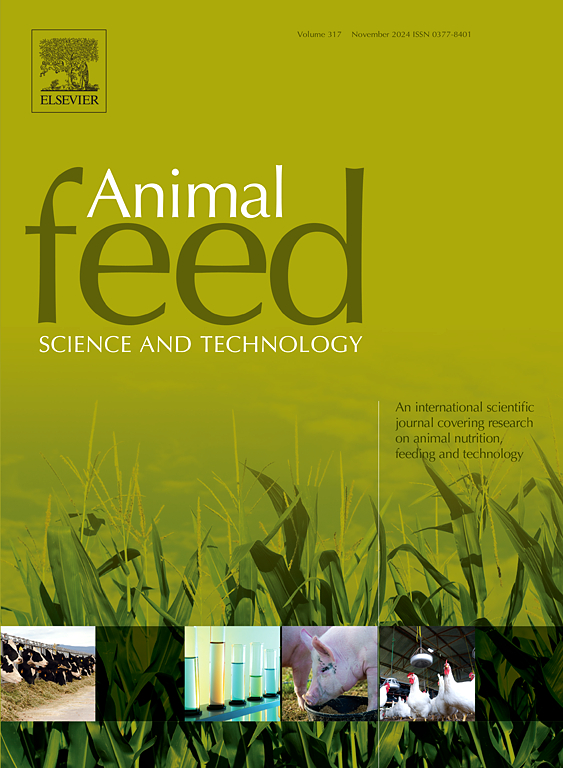Effects of supplementing a basal diet of Chloris gayana hay with protein-rich forage legume hays on chevon quality of Xhosa goats
IF 2.5
2区 农林科学
Q1 AGRICULTURE, DAIRY & ANIMAL SCIENCE
引用次数: 0
Abstract
The study aimed to determine the effect of supplementing a basal diet of Chloris gayana hay with protein-rich legume hays on the chevon quality of Xhosa goats. Eighteen goats, 12 months with an average weight of 14.2 ± 0.24 kg were used in a complete randomised design with diet as a fixed factor and animal nested in the treatment diet. Goats were randomly apportioned to three dietary treatments of Katambora: Vigna (KV – 1:4), salt (0.5 %), molasses (3 %), maize (5 %) and mineral vitamin premix (1.5 %); pellets (P); 90 % lamb and ewe pellet plus 10 % Katambora grass hay; and Katambora: Lablab (KL- 1:4); salt (0.5 %), molasses (2 %) maize (5 %) and mineral vitamin premix (1.5 %). Treatment two (P) was the positive control diet. The results showed that goats produce lean carcasses of acceptable conformation and fat cover. The treatment diets did not affect slaughter body weight (SBW), hot carcass weight (HCW) and cold dressed mass (CDM) of carcasses. The dietary treatments had a significant effect on dressing out percent, initial pH (p = 0.028), redness (a*) (p = 0.014), Warner Blartze Shear force (WBS) (p = 0.0351), drip loss (p = 0.004) and cooking loss (p = 0.007). The a* values and drip loss values were; 11.05, 10.11, 10.35 and 6.08, 6.67, 6.17 % for KV, P, and KL respectively. Lablab and cowpea had positive effects on the carcass traits of Xhosa goats.
求助全文
约1分钟内获得全文
求助全文
来源期刊

Animal Feed Science and Technology
农林科学-奶制品与动物科学
CiteScore
6.00
自引率
6.20%
发文量
266
审稿时长
3 months
期刊介绍:
Animal Feed Science and Technology is a unique journal publishing scientific papers of international interest focusing on animal feeds and their feeding.
Papers describing research on feed for ruminants and non-ruminants, including poultry, horses, companion animals and aquatic animals, are welcome.
The journal covers the following areas:
Nutritive value of feeds (e.g., assessment, improvement)
Methods of conserving and processing feeds that affect their nutritional value
Agronomic and climatic factors influencing the nutritive value of feeds
Utilization of feeds and the improvement of such
Metabolic, production, reproduction and health responses, as well as potential environmental impacts, of diet inputs and feed technologies (e.g., feeds, feed additives, feed components, mycotoxins)
Mathematical models relating directly to animal-feed interactions
Analytical and experimental methods for feed evaluation
Environmental impacts of feed technologies in animal production.
 求助内容:
求助内容: 应助结果提醒方式:
应助结果提醒方式:


